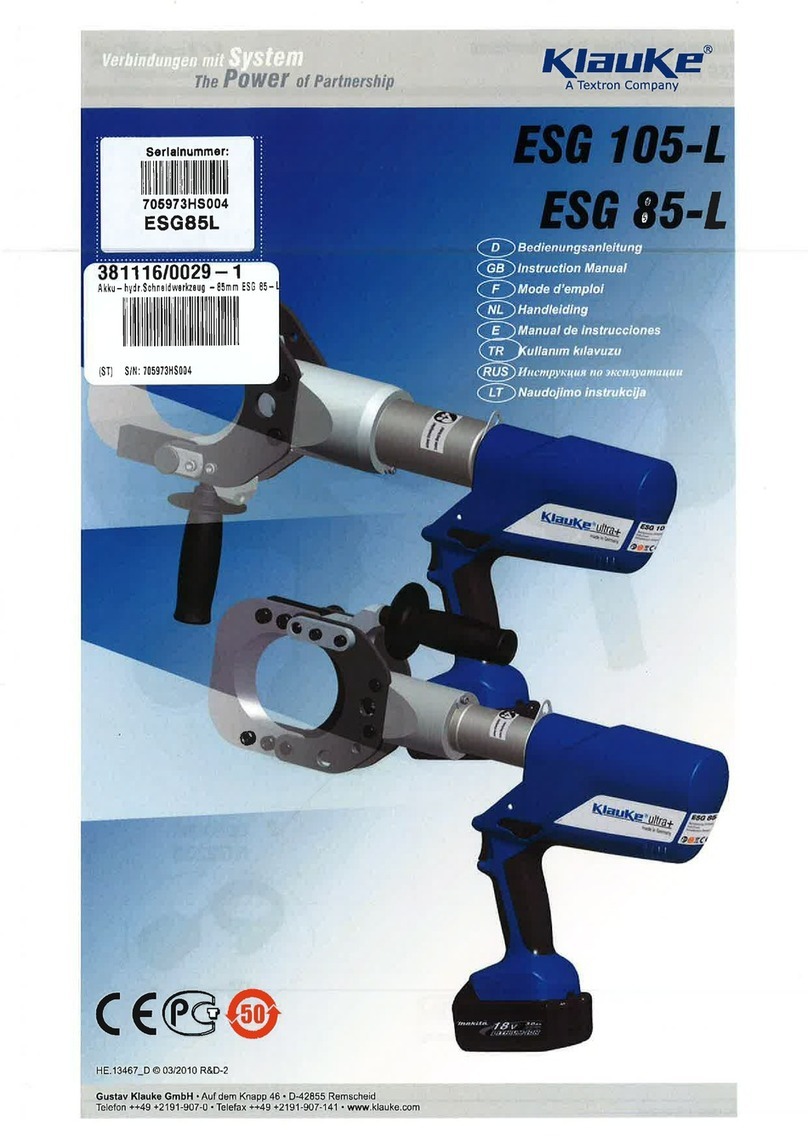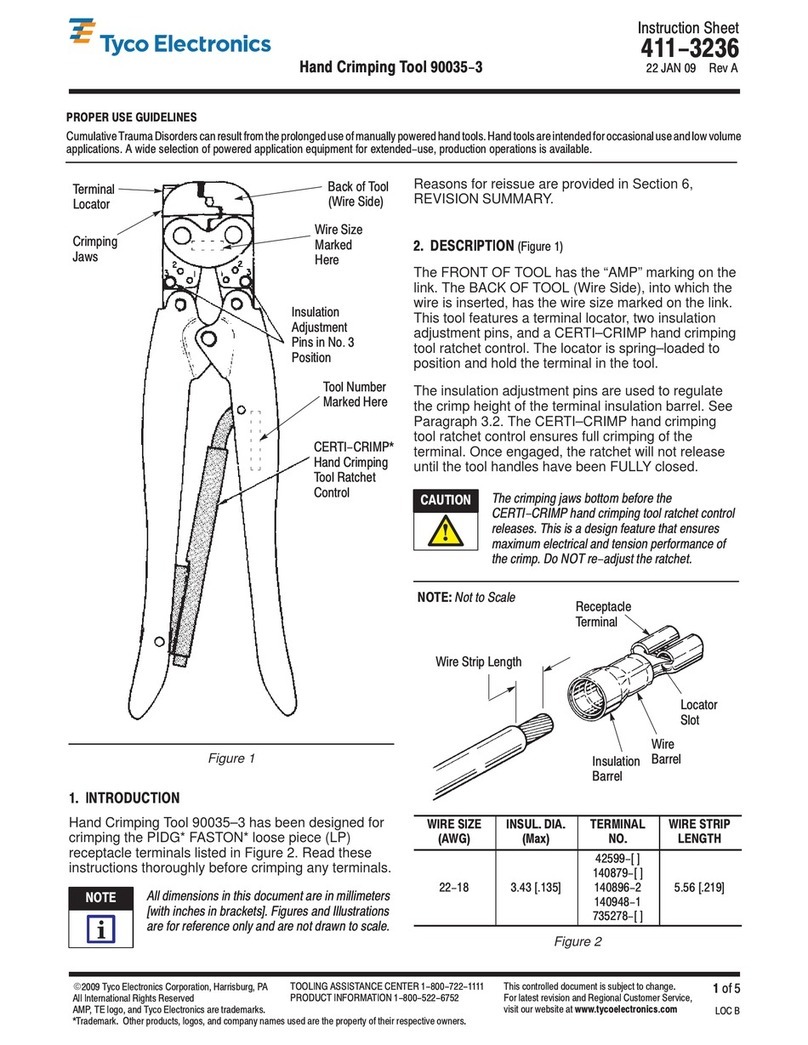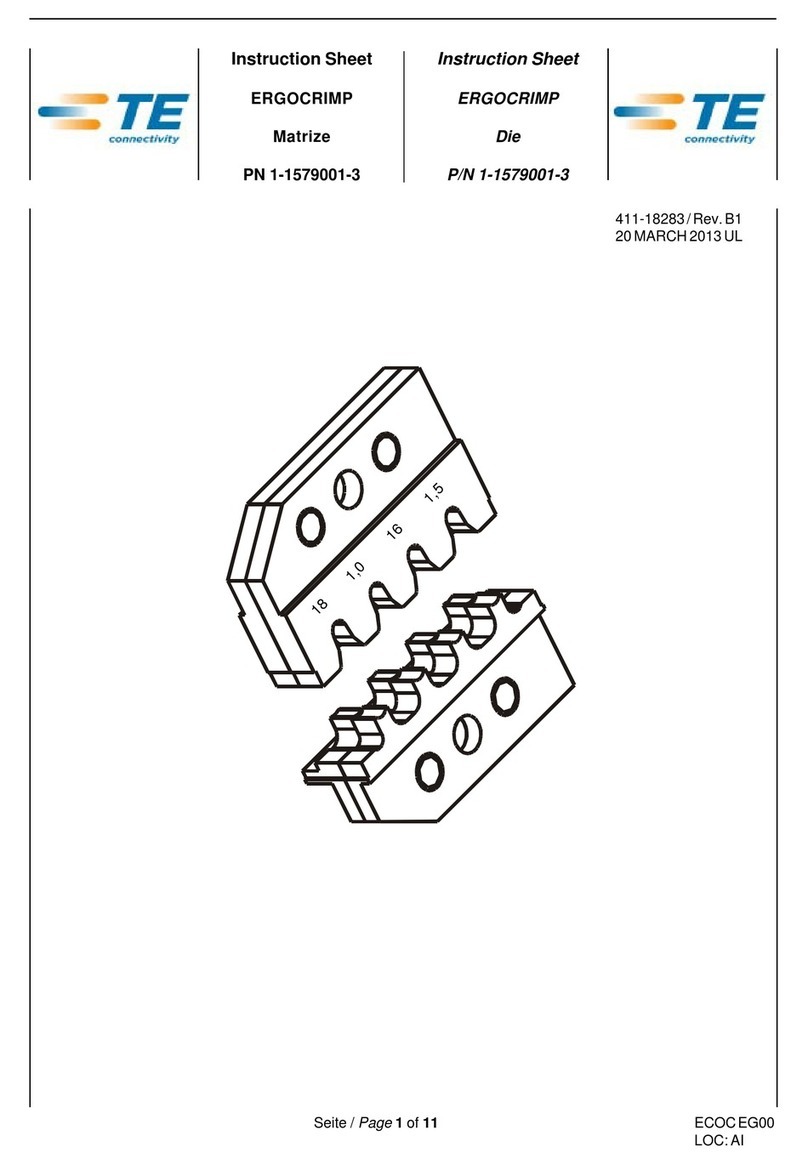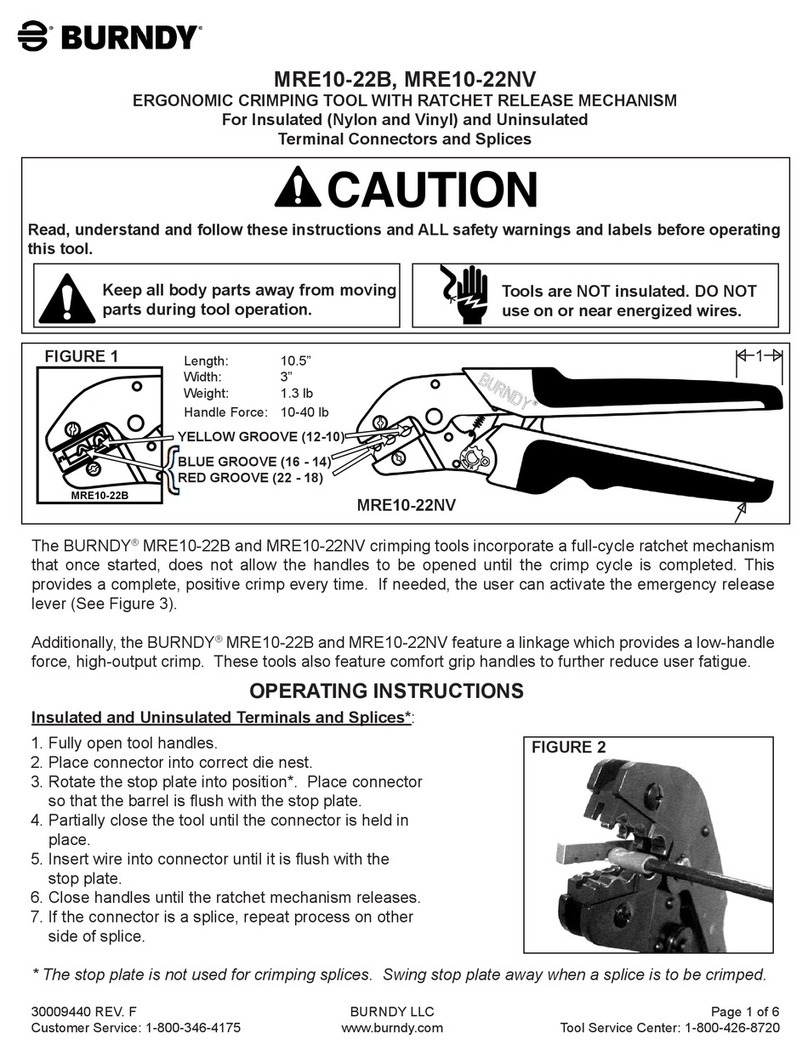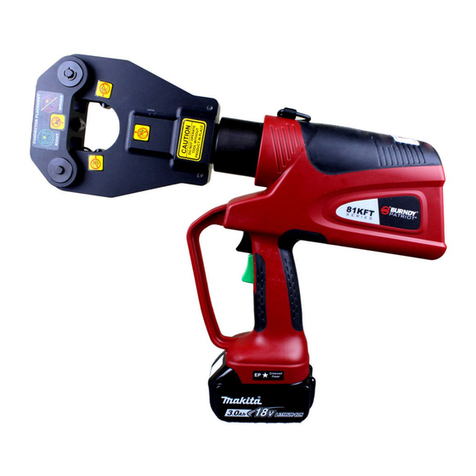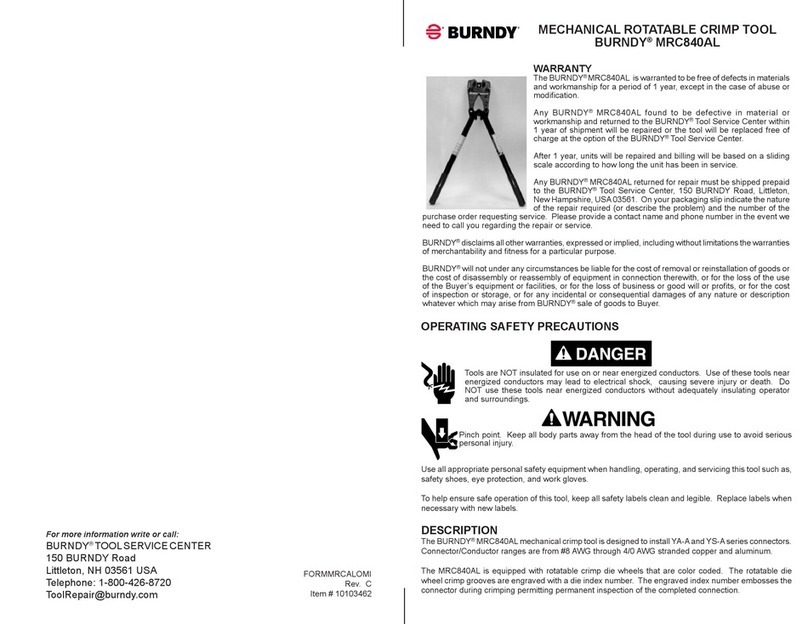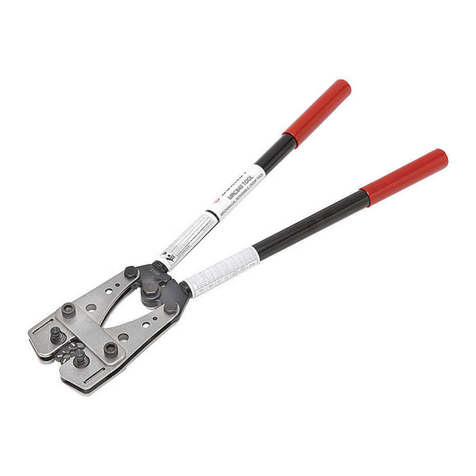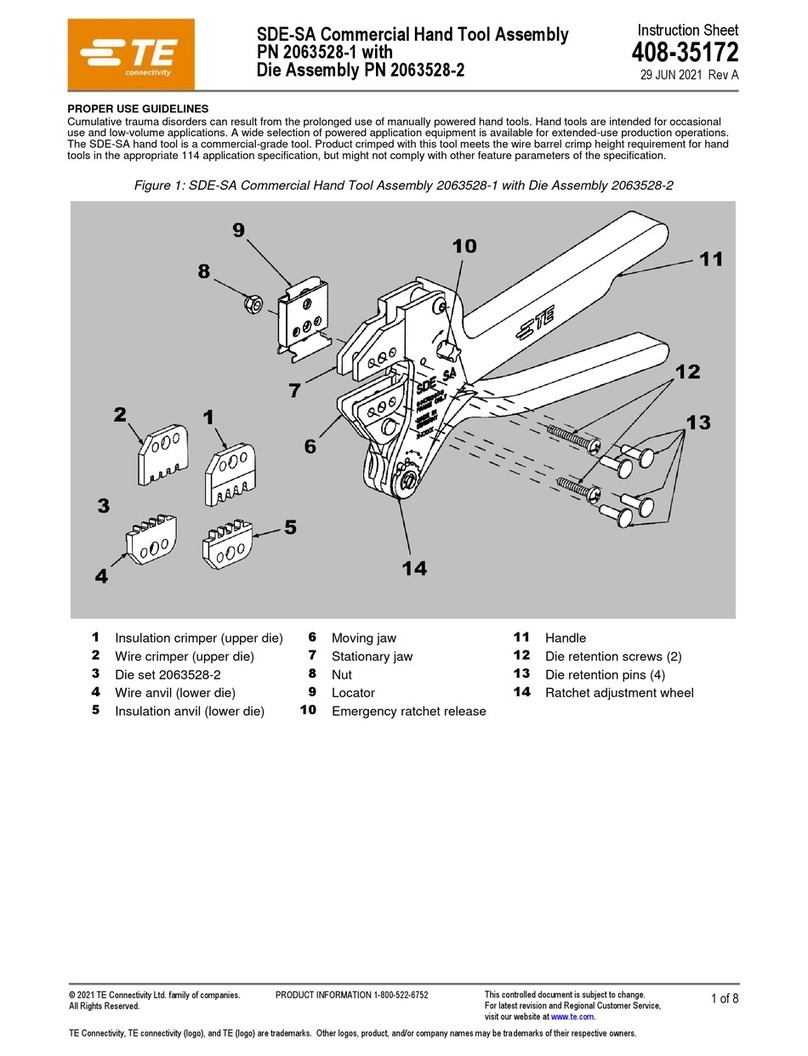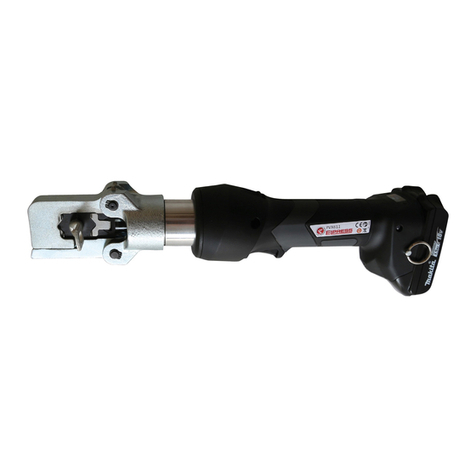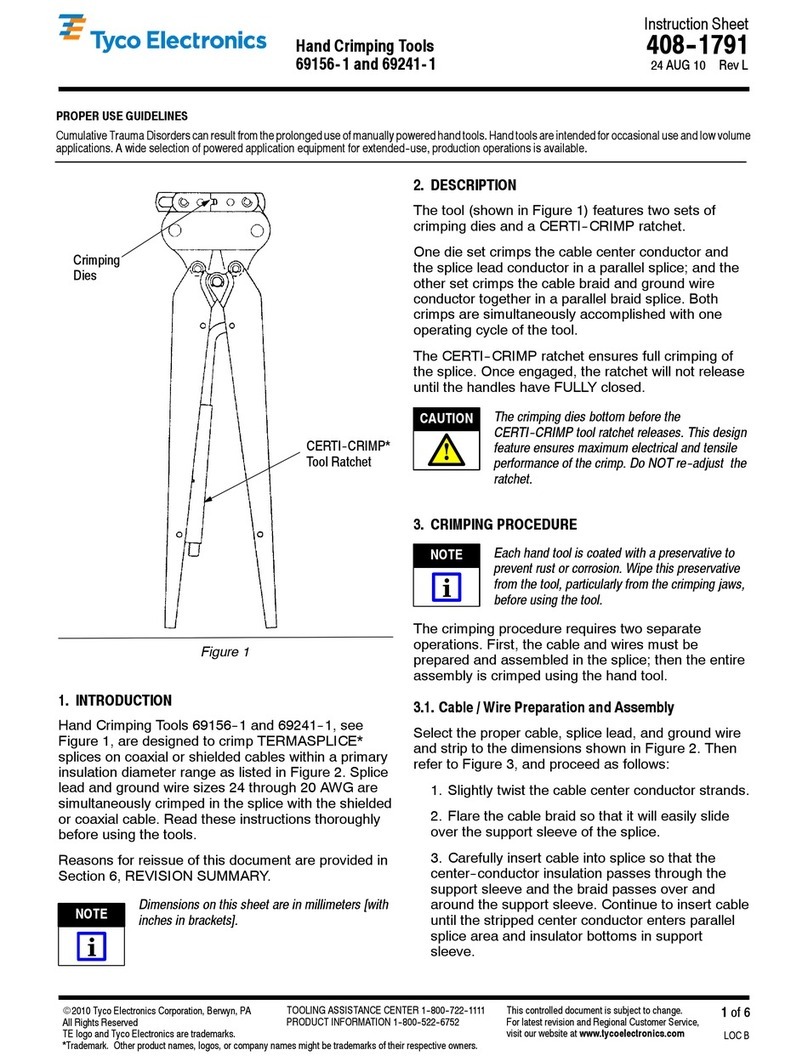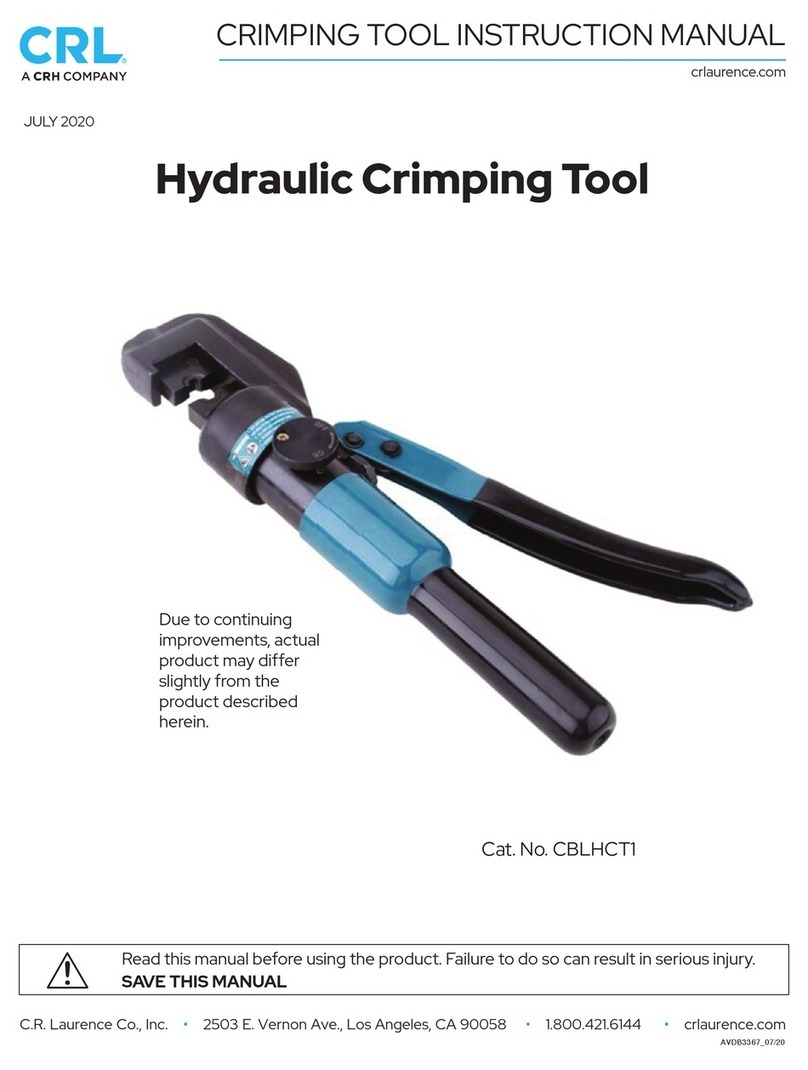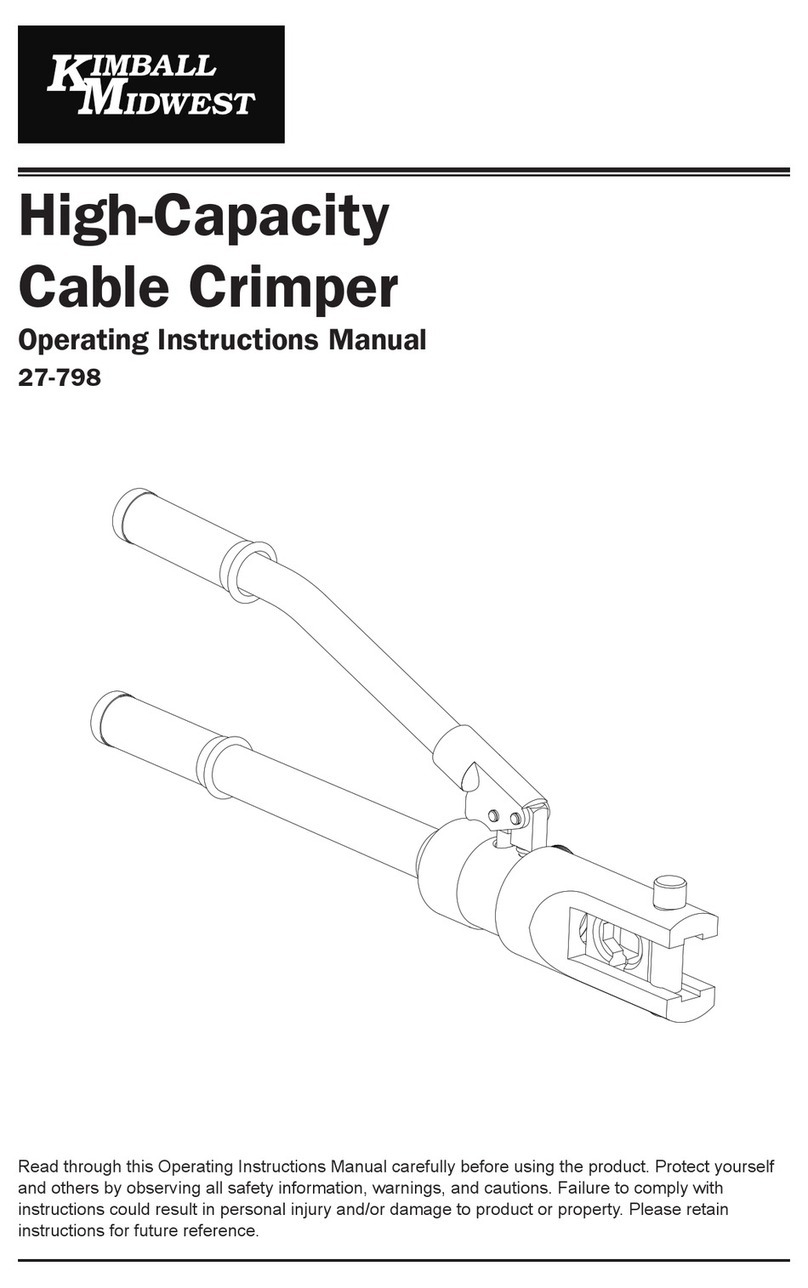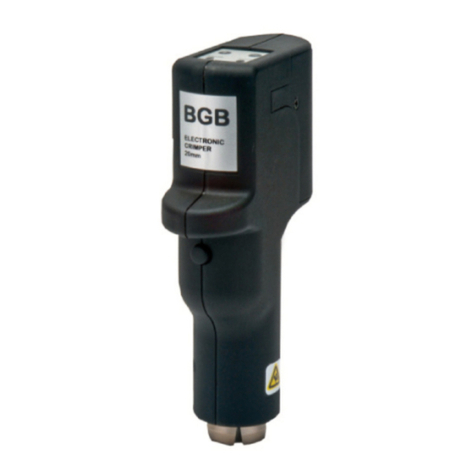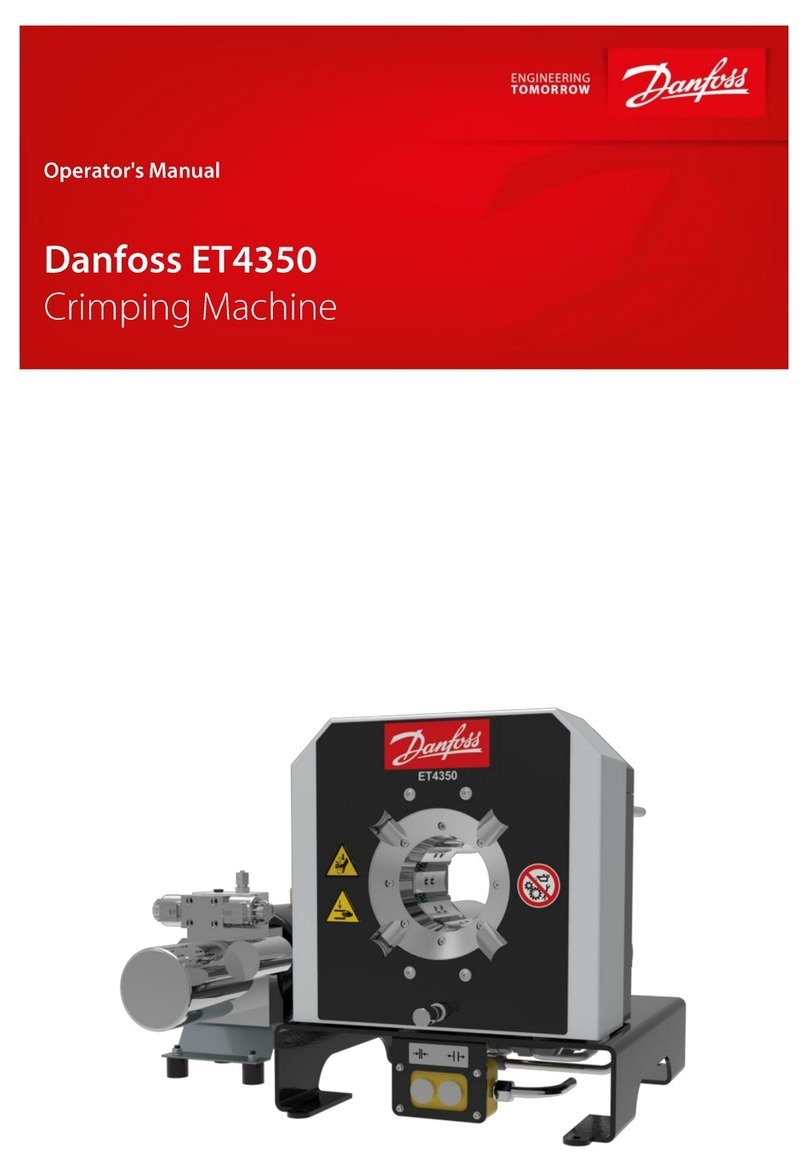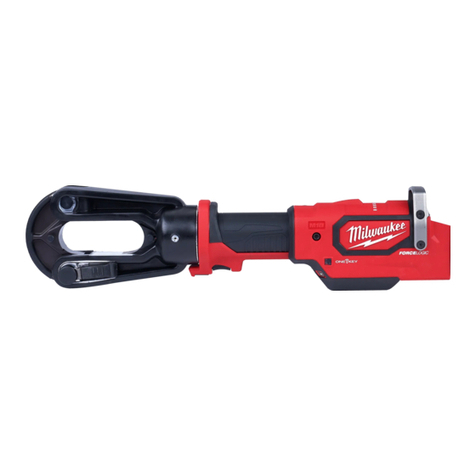
9
JAW INSTALLATION PROCEDURE
One of the main features of the BURNDY®PATRIOT®
IN-LINE®Crimper/Cutter tool is its ability to easily change
out and install dierent types of jaws, without the need
for any additional tools. There are several dierent types
of jaws for crimping and cutting, so it may be necessary
to switch jaws depending on the application. (See Parts
Section to order other jaw variations.)
1) Engage the activation trigger lock and then remove
battery.
2) Press the black retraction trigger to ensure the ram is
fully retracted.
3) Grip the knurled end of the main pivot pin and pull
outward. Turning the pin while pulling will make it
easier to get past the detent and pull outward. (Note:
The pin will not pull out of the yoke completely.)
4) Squeeze the jaws slightly and remove the jaws from
the tool.
5) Insert new jaws into the yoke by closing the jaws
slightly in your hand. Line up the tabs at the base of
the jaws with the notches in the yoke.
6) Push the pin inward so that it is fully inserted into the
jaws and yoke.
BLADE REPLACEMENT PROCEDURE
If the blades wear out, it will be necessary to change out
and install new blades. (See Parts Section to order new
blades and guide.)
Required Tools: 9/64" Allen Wrench, 5/32" Allen Wrench
1) Engage the activation trigger lock and then remove
battery.
2) Remove the guide by removing the #8-32 socket head
cap screws.
OPERATION
Read and follow all pre-operation and
safety instructions provided for your
PATRIOT®IN-LINE®Crimper/Cutter and
for the battery charger (see Charger
Instruction Manual) and accessories.
Failure to follow the proper operating
instructions and safety information
provided can lead to serious personal
injury or death.
This tool is NOT insulated for use on or
near energized conductors. Use of this
tool near energized conductors may lead
to electrical shock, causing severe injury
or death.
Pinch point hazard. Crimp ram operates
at high speed and force and can cause
severe personal injury. Keep all body
parts away from moving parts of the tool,
especially the area of the head and die
holder during operation.
Blade hazard. Cutter blades move at
high speed and force and can cause
severe personal injury. Keep all body
parts away from moving parts of the tool
during operation.
NOTE: Do not immerse the tool in water, as the PATRIOT®
IN-LINE®Crimper/Cutter is not designed to operate under
water. This is considered abuse and will void the warranty!
Always use the tool lanyard provided to prevent dropping
the PATRIOT®IN-LINE®Crimper/Cutter.
BLADE REPLACEMENT Continued
3) Remove each blade by removing the three
#10-32 x 1/2" socket head cap screws on both sides.
4) Install the new blades and secure with the three
#10-32 x 1/2" cap screws on each side.
5) Install the blade guide and secure with the #8-32
socket head cap screws.
6) Be sure that all screws are tight before operating the
tool.
7) Cycle the tool. Make sure that there is no interference
and that the jaws advance and retract smoothly.
DIE INSTALLATION PROCEDURE
For the majority of crimped connections, it is necessary to
select and install the appropriate die for the application.
Please refer to the connector catalog page or the die
index number shown on the connector to determine the
correct die set.
To Install:
1) Select the appropriate die for the application.
2) Engage the activation trigger lock and then remove
battery.
3) Push in die button while inserting the die into the crimp
jaws. The second die may have to be installed via the
top of the tool. (Note: For polarized dies – W28RT for
example – orient the dies in the crimp jaws according
to the arrow stamped on the die.)
To Remove:
1) Engage the activation trigger lock and then remove
battery.
2). Push in die button while removing the die.
Note: The rst die may have to be removed out the
top of the tool.
